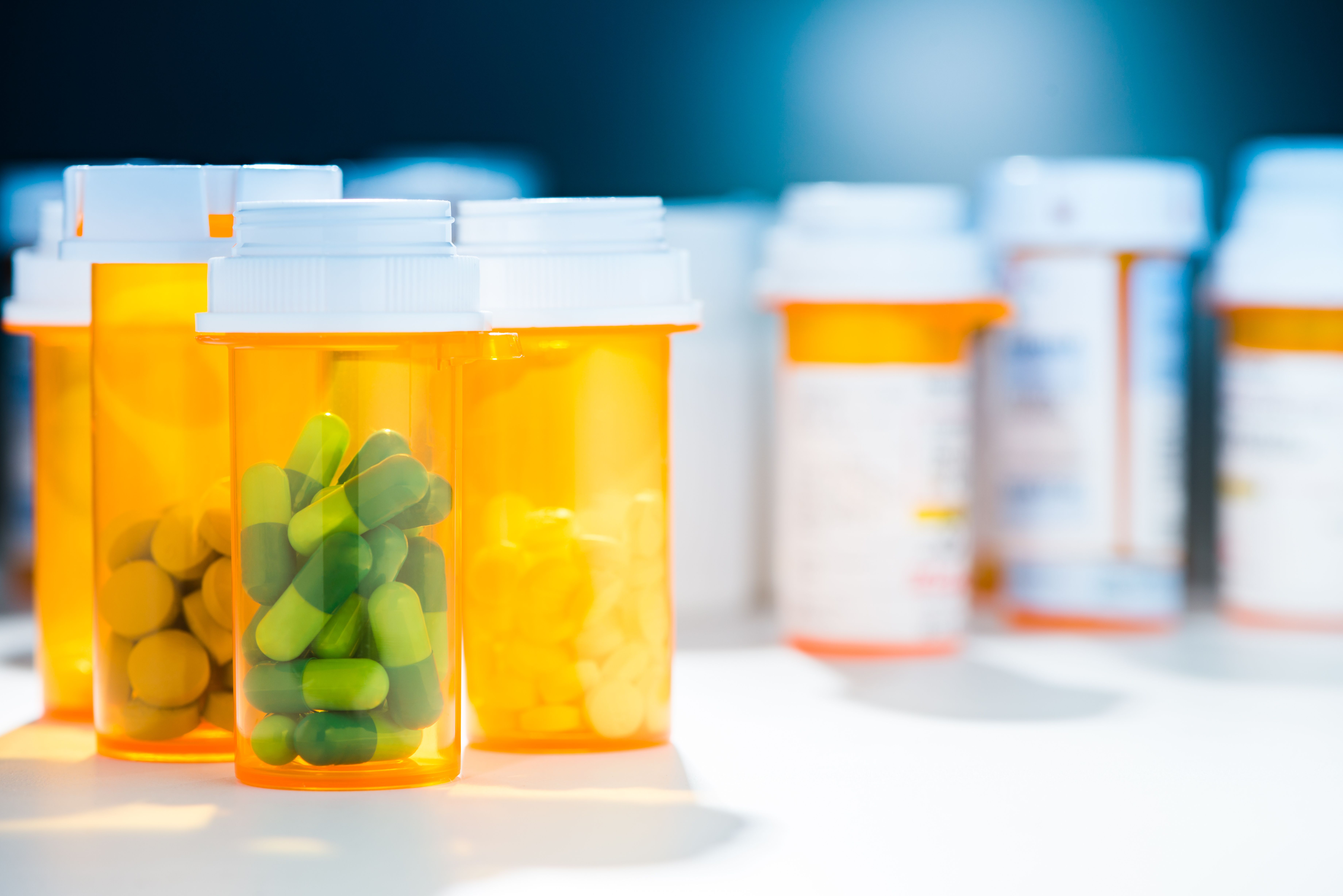News
Article
Oncological Biosimilars Shown to Be as Safe as Their Reference Products
Author(s):
Study finds patients with cancer feel reassured that biosimilars provide a safe, adequate, and cost-effective alternative to the pricier reference drug.
Biosimilars are commonly used in numerous clinical fields, including oncology. These drugs are different from the generic form of chemical products because it is impossible to develop molecules identical to their reference products due to natural variation and their heterogenic product process. Biosimilars are comparable to the reference product regarding structure, biological activity, efficacy, safety, and immunogenicity; however, there is some skepticism surrounding the safety and efficacy of these products among physicians and patients.
Prescription pill bottles | Eric Hood | stock.adobe.com

In a study published in Cancers, researchers analyzed post-marketing pharmacovigilance data of biosimilar monoclonal antibodies used in oncology compared with their respective reference products. The study authors evaluated the distribution of medicine-reaction pairs related to biosimilars of 3 antitumor biological products—bevacizumab, rituximab, and trastuzumab—as well as their respective corresponding biosimilar drugs—Avastin, MabThera, and Herceptin. The 3 drugs are monoclonal antibodies used in first- and second-line treatment regimens with other anti-cancer therapies for a plethora of common malignant diseases.
A total of 36,200 reported preferred terms (PTs) were analyzed, of which 23,592 (65%) were identified from reports for original products, and 12,608 (65%) for biosimilars. Of the reports, the proportions of females were higher than males (58.5% versus 36.2% for originator products; and 57.6% versus 26% for biosimilars), and 16.4% reports for biosimilars were missing information on sex. The majority of reports noted that patients were aged 18 to 64 years, with a lower percentage aged 65 to 85 years.
Study results indicated that the most frequently reported adverse drug reactions (ADRs) for biosimilars were non-serious and consistent with the safety profiles of reference products. ReportedADRs in Avastin users included asthenia (n = 32 reactions, reporting odds ratio [ROR] 2.63 [CI 95% 1.81–3.82]), neuropathy peripheral (n = 29, ROR 2.44 [CI 95% 1.65–3.61]), and abdominal pain (n = 28 ROR 3.92 [CI 95% 2.58–5.94]); reported ADRs in MabThera included COVID-19(n = 169 reactions, ROR 1.73 [CI 95% 1.42–2.09]), pruritus(n = 163, ROR 1.96 [CI 95% 1.6–2.41]), and throat irritation(n = 135 ROR 4.9 [CI 95% 3.55–6.74]); and reported ADRs in Herceptin included diarrhea (n = 68, ROR 2.07 [CI 95% 1.61–2.66]), chills (n = 68, ROR 2.07 [CI 95% 1.61–2.66]), and nausea (n = 57 ROR 1.6 [CI 95% 1.22–2.1]).
Although some severe ADRs (e.g., rheumatoid arthritis, mantle cell lymphoma, and systemic lupus erythematosus) were reported as well, these were less common. Additional reported ADRs included weight increase, blood pressure fluctuation, irregular heart rate, and physical deterioration.
Despite the potential ADRs, these results provide reassurance regarding the safety equivalence of biosimilars, supporting their use as acceptable alternatives to originator biologics, according to the study authors. Further, patients can feel reassured that they are utilizing adequate, cost-effective treatments for their medical conditions when choosing to use biosimilars. Because the number of biosimilars in development within oncology is rising, they have the potential to create a more sustainable health care system.
Study limitations include the lack of denominator data (e.g., number of patients exposed to a particular drug) and potential incomplete, inaccurate, and inconsistent data in reports. Further, the system was affected by underreporting, which could have affected the validity and accuracy of ROR estimates because the calculations are based on the assumption that the reporting rate is constant across all medications and ADRs.
Reference
Nikitina V, Santi Laurini G, Montanaro N, Motola D. Comparative Safety Profiles of Oncology Biosimilars vs. Originators in Europe: An Analysis of the EudraVigilance Database. Cancers. 2023; 15(14):3680. doi.org/10.3390/cancers15143680





